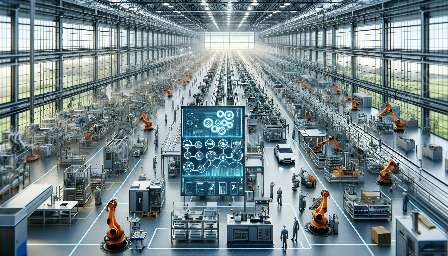Product Layout refers to the arrangement of facilities, equipment, and processes required to produce a specific type of good or service. It is a crucial aspect of manufacturing operations, as it directly impacts the efficiency, productivity, and overall performance of a production system.
Compatibility with Facility Layout
Product layout is closely related to facility layout, which involves the arrangement of different elements within a facility, such as machinery, equipment, workstations, and storage areas. The compatibility between product and facility layout is essential for optimizing the use of space, minimizing material handling, reducing production lead times, and enhancing workflow efficiency.
Effective coordination and alignment between product and facility layout can lead to improved production processes, lower production costs, increased output, and enhanced overall operational performance.
Compatibility with ManufacturingProduct layout is intricately linked to the manufacturing process, as it dictates how resources are organized and utilized for producing goods. Manufacturing encompasses the entire process of converting raw materials into finished products, and product layout plays a critical role in streamlining the production flow, enhancing productivity, and ensuring product quality.
The compatibility of product layout with manufacturing lies in its ability to facilitate the smooth and efficient movement of materials, minimize bottlenecks, and optimize the utilization of resources throughout the production process.
The Benefits of Product Layout
Enhanced Efficiency: Product layout enables a streamlined and efficient production process by minimizing unnecessary movement of materials and resources, thereby eliminating waste and improving overall efficiency.
Improved Quality: By organizing the production process in a logical sequence, product layout helps in maintaining consistent quality standards and ensuring that the finished products meet the required specifications.
Reduced Lead Time: A well-designed product layout can significantly reduce production lead times by minimizing setup times, reducing material handling, and optimizing workflow, ultimately leading to faster turnaround times.
Cost Savings: Product layout plays a crucial role in reducing production costs by minimizing unnecessary inventory, lowering material handling expenses, and improving resource utilization, thereby contributing to overall cost savings.
Increased Productivity: By eliminating bottlenecks and streamlining the production flow, product layout contributes to increased productivity, allowing for higher output with the same or fewer resources.
The Challenges of Product Layout
Inflexibility: Product layout is often less flexible compared to other layout types, making it challenging to accommodate changes in product design, production volume, or process flow.
Space Utilization: Efficient space utilization is crucial in product layout, and inadequate space can lead to congestion, inefficient material handling, and limited scalability.
Specialized Equipment: Product layout often requires specialized equipment and machinery to support the specific production processes, which can result in higher initial investment and maintenance costs.
High Volume Requirements: Product layout is most effective when dealing with high volume production, and it may not be suitable for facilities with variable production volumes or a wide range of product types.
Best Practices in Product Layout
Utilize Cellular Manufacturing: Adopting cellular manufacturing techniques can help in creating self-contained production units, improving flow, reducing lead times, and increasing flexibility within the production process.
Implement Lean Principles: Embracing lean manufacturing principles such as waste reduction, continuous improvement, and just-in-time production can enhance the effectiveness of product layout and drive operational excellence.
Invest in Automation: Leveraging automation and robotics to streamline repetitive tasks, minimize human error, and improve overall production efficiency can greatly enhance the effectiveness of product layout.
Consider Product Family Grouping: Grouping products with similar manufacturing and assembly processes can reduce changeover times, enhance efficiency, and simplify the product layout, especially in facilities with a wide product range.
Conclusion
Product layout plays a pivotal role in optimizing manufacturing processes, enhancing operational efficiency, and driving overall productivity. Its compatibility with facility layout and manufacturing is critical in ensuring seamless production flow, efficient resource utilization, and cost-effective operations. By understanding the benefits, challenges, and best practices associated with product layout, organizations can strategically design and implement production systems that are well-aligned with their operational needs and objectives.


